Author: admin
When I read about destruction of some most of Syria’s cultural monuments, including six World Heritage Sites, I think of Hitler. The story goes he spared Paris from war’s destruction so it could become a “jewel in the Nazi crown.”
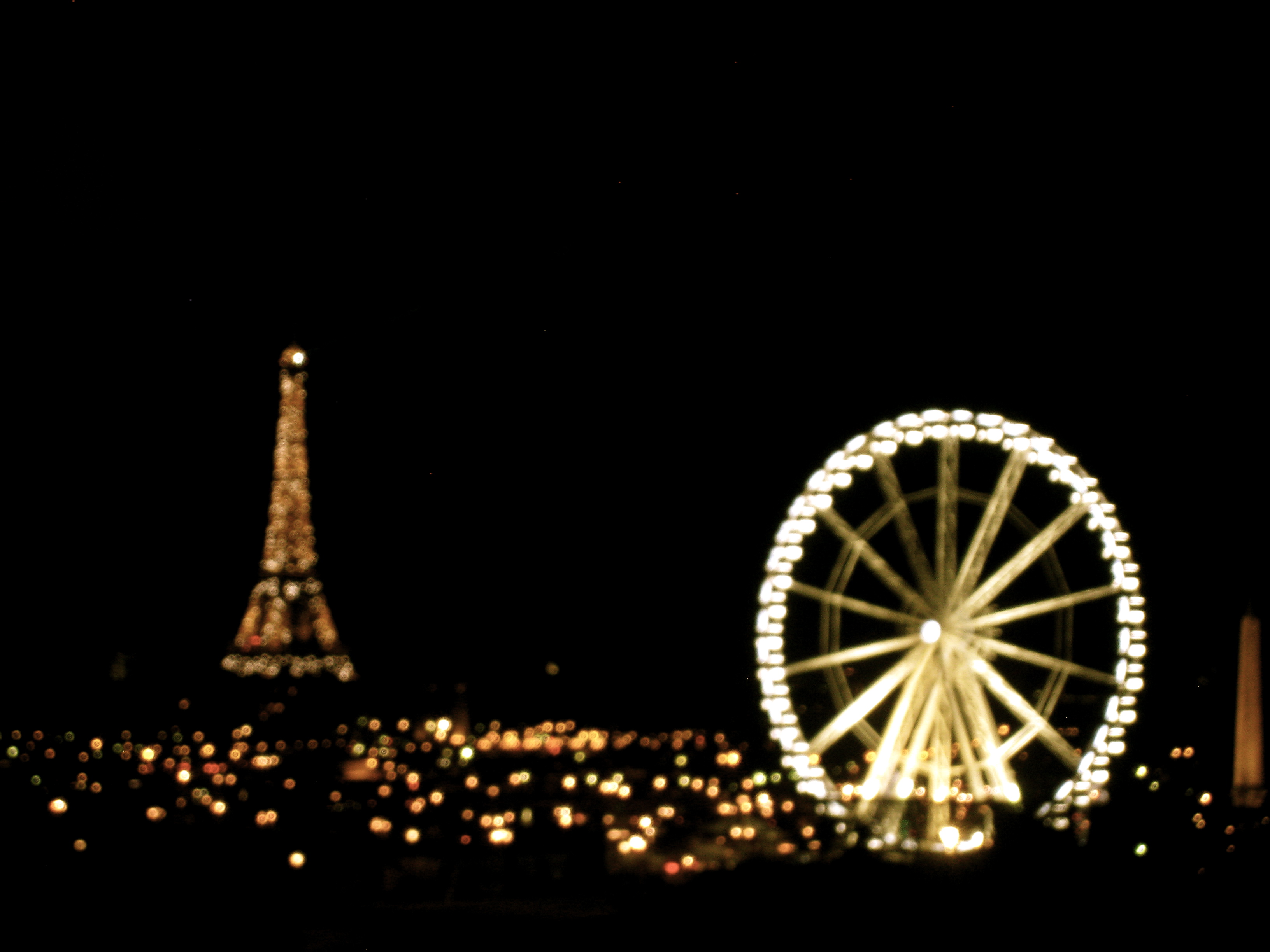 Somebody needs to share this thinking with the Syrians, fighting a war in which both sides bomb without regard for human life, much less history.
Somebody needs to share this thinking with the Syrians, fighting a war in which both sides bomb without regard for human life, much less history.
“War is good for us…we buy antiquities cheap, and then sell weapons expensively. The rebels need weapons, and antiquities are an easy way to buy them,” says a smuggler profiting from an association of diggers dedicated to fencing loot to fund the revolution against President Bashar Assad. (http://ti.me/PbFM0m) With two dozen heritage museums, hundreds of archaeological sites, and a countrywide self-preservation mindset, the pickings are ample. Has it never occurred to these guys that antiquities aren’t infinite? When they run out, then what?
So what have we lost? I write “we” because Syria is the cradle of civilization, a four-thousand year old gem of Biblical and Islamic sites, Roman cities, and Crusader castles, as well as the oldest continuously inhabited city in the world: Damascus. If we are truly “global,” someone should be asking what Syrians are going to do when bombing stops. The country’s oil reserves are dwindling, and there’s no market for desert sand.
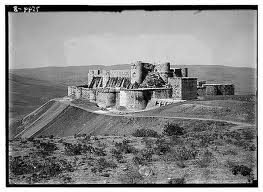
Krak des Chevaliers, the world’s best-preserved Crusader castle, bombed March 2012
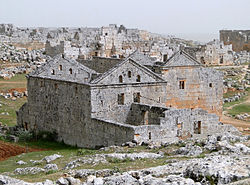
Dead cities of Syria, hit by missiles, tanks, and gunfire
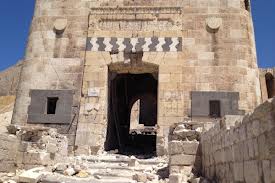
Aleppo’s souk, destroyed by fire October 2012
Isn’t tourism the country’s only option? They’re literally burning that industry to the ground. I wonder what’s going to be left to rule when there are no more civilians to kill, and history has been obliterated.
[subscribe2]
(Laurence O’Bryan, international suspense writer of note, asked me to write a guest blog for his website, http://bit.ly/12mQSW1. Flattered as I can be, I share it with you now.)
Last fall, less than seventy-two hours after returning from a writers’ conference accosting acquisitions editors, a Big Six Imprint asked for my first manuscript. Things then slowed considerably when they deemed my heroine “too atypical.” A very fine literary agent now shops the three-book proposal everywhere.
I am a patient woman.
When Laurence graciously asked for a guest blog about this writing adventure (which began with a journalism degree in the eighties, and was honed in marketing and advertising for twenty-five years), I thought immediately of the social media challenge. Writers I know tend to be hermits like myself, so tossing a private soul to public wolves is intimidating and puzzling. What to do?
My epiphany occurred when I realized I was no longer me, but rather the product. I instituted the demographic grinder: who is my market? What are they interested in reading? What are they buying? The NYTimes bestseller list is a good place to begin research, and the recent-release shelf of your local bookstore depicts what publishers are buying. (If you’re not using a professional facebook page, you’re missing a demographic bonanza; the reports are invaluable.)
I questioned my “product.” What is its competitive point of difference? How does it nest uniquely in the marketplace? How can I position it in the best, most engaging light? To answer these, I had to know market and genre, study competition, and analyze accomplishments and topic. Gone are the days when authors are Hemingway catching a marlin with one hand while writing The Old Man and the Sea with the other. Today’s authors have to be aware, educated, and savvy. Businesspeople.
Then I analyzed data and budgeted. What could I do—copy and design—and what did I need to contract? I fearlessly created facebook and twitter pages, and my original website (now being redesigned as my persona evolves). Fortunately, I’m a prolific (if untalented) photographer, so photos colorfully enhanced the initial platform that professionals now take to the next level. I sought input from the most qualified, talented people I could afford.
And I write. Two manuscripts are complete: first professionally edited, second scheduled for edit in July. I’ll finish the third by year’s end. A fourth and fifth lurk in my mind’s dark recesses. Meanwhile, manuscripts and persona mature simultaneously, creating the professional author’s image publishers seek.
I am an optimistic woman.
[subscribe2]
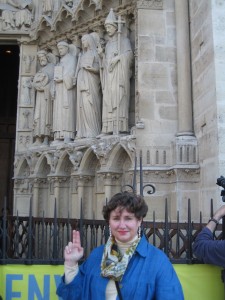 During Lent (the 46-day season preceding Easter on the Orthodox Christian calendar), churches worldwide recount Christ’s death, Herod’s complacency, Peter’s betrayal, and finally, Christ’s resurrection. I’d say this powerful theology is the cornerstone of my faith.
During Lent (the 46-day season preceding Easter on the Orthodox Christian calendar), churches worldwide recount Christ’s death, Herod’s complacency, Peter’s betrayal, and finally, Christ’s resurrection. I’d say this powerful theology is the cornerstone of my faith.
But did you hear a sermon on the first person to recognize the risen Christ? It wasn’t the local priest or pharisee. Not the youth minister sporting a well-trimmed soul patch. Nor the local magistrate rescinding the death certificate, or paparazzi wanting to make a quick mosaic. According to Luke (my favorite), Mark, and Matthew, Christ appeared to Mary Magdalene — a woman and prostitute, no less — and her friends. John wrote she didn’t recognize Christ (while confirming she was first), and Paul (an easy target for misogyny) told in Corinthians He appeared to Cephas, then Peter.
And here’s a shocker: the women were on their way to the tomb to render service. You know, like the thankless jobs (nursery work and bake sales) they do to keep today’s church running smoothly. Mary Magdalene came to the tomb to anoint Christ’s body with spices, delaying its putrification.
Women were second-class citizens in those times, unable even to testify in court. And yet Christ, whose every move, breath, and thought was significant, chose to appear to them — to us, to you, to me — because His messages are unlimited by gender, race, and creed.
As I’ve written before, Christian women are part of an unbreakable chain anchored to the very foundation of our faith. Our links include Eve (BTW, Adam was standing next to her, mute, in the garden — check the verses in Hebrew); Miriam (Moses’ sister, the prophet); Deborah (Old Testament judge, warrior, and advisor to kings); Dorcas (church-builder); Junia (disciple whose feminine name scholars now believe was changed to the masculine, Junius); and the disciple Phillip’s four daughters (prophets all).
Claim your heritage! Educate your daughters. Hold your pastor accountable for preaching inclusively when supported by Biblical data. And live vigorously and joyfully as representatives of Christ, daughters of God.
Christ is risen! Hallelujah!
[subscribe2]
It really was a research trip: the Amazon River, Machu Picchu, Cusco. Along the way, I caught piranha in the Amazon. Tiny, deadly fish that struck aggressively, baring razor-like teeth before hitting the boat in a Napoleonic frenzy. No skill was involved except preventing the snarky devils’ interaction with a body part.
But how can a fly fisherman go to South America and skip Patagonia’s fine rivers? I was Chile-bound with my wading pants in my carry-on.
He was the last fish of the trip. I was tired, having caught and released eight Chinooks in two days. They fought savagely, and I used traditional lures instead of fluffy flies requiring stripping or spey-cast swinging. I’m a committed fish releaser, hoping to catch every one repeatedly as they grow stronger, propagating the species with each seasonal cycle.
But when I hooked El Guapo—which means Pretty Face, which he lacked—I knew he was the size of a minivan. After twenty minutes of slow dancing in a pump-and-reel two step punctuated by long runs and steady head shakes (both his and mine), I slid him to the bank with shaking arms. The mighty beast had swum many seasons from the Pacific ocean less than three miles downriver.
El Guapo the Chinook: 44 inches, 58/59 pounds
Winter in Patagonia hits hard. Employment is still seasonal for many, requiring larder stocking for snowy, blustery months ahead. El Guapo would feed families, the guide assured me, as a welcome addition to many freezers. So we returned to the States with only memories of the fight—a few photos of one of less than a dozen fish kept in twenty years of sport fishing.
El Guapo, I salute you. May you fill a dozen empty bellies, and may your children live long lives.
[subscribe2]

I’m a Loomis GLX kind of girl. Add WonderLine and a Lamson reel, my favorite guide Mitch and a few clouds so I can toss double dries at the bank, and I can catch almost anything with fins. (True confession: I was one of only twelve who qualified for the IGFA World Championship a few years ago. Yes. You can salute now.)
But I pale in comparison to the Amazon angler. Our cruise included a fishing expedition down arguably the world’s longest river. A river full of critters (red-bellied piranha and alligator-like caiman come to mind) I really don’t want to catch. (Don’t forget the parasitic toothpick fish, the candiru, but I’ll spare you details.)
Mr. Wonderful, ever accomodating my sporting addiction, bravely offered to accompany me on an angling expedition. For the first time in twenty-six years, I declined.
I simply am not an Amazonian angler. I catch-and-release, something regarded as stupid in a region where every netting fills a belly. I rubberneck, watching elk and deer, golden and bald eagles, ermine and fox in a landscape I know well, and am unaccustomed to things that could eat me in a nanosecond. How poorly would I fish distracted by monkeys and parrots, wondering if the next splash was a flying frog (like the blue poison dart) or aggressive anaconda?

And really, I don’t have the figure for Amazonian angling adventure. A loincloth? No. Give me Simms’ wading pants and good, solid, cleated boots. How am I supposed to see a #22 midge through mosquito net? What if a pirahna eats my hopper? When the electric eel takes my fly, my Tupi vocabulary doesn’t include colorful profanity.
No. I’m sitting on the boat as you read, sipping an iced tea under the sun canopy, watching one of our globe’s most remarkable and least-explored worlds float by. I’ll save my “Fish on!” for the Arkansas River caddis hatch next month, and live to fish another day.
[subscribe2]
 Somebody needs to share this thinking with the Syrians, fighting a war in which both sides bomb without regard for human life, much less history.
Somebody needs to share this thinking with the Syrians, fighting a war in which both sides bomb without regard for human life, much less history.




